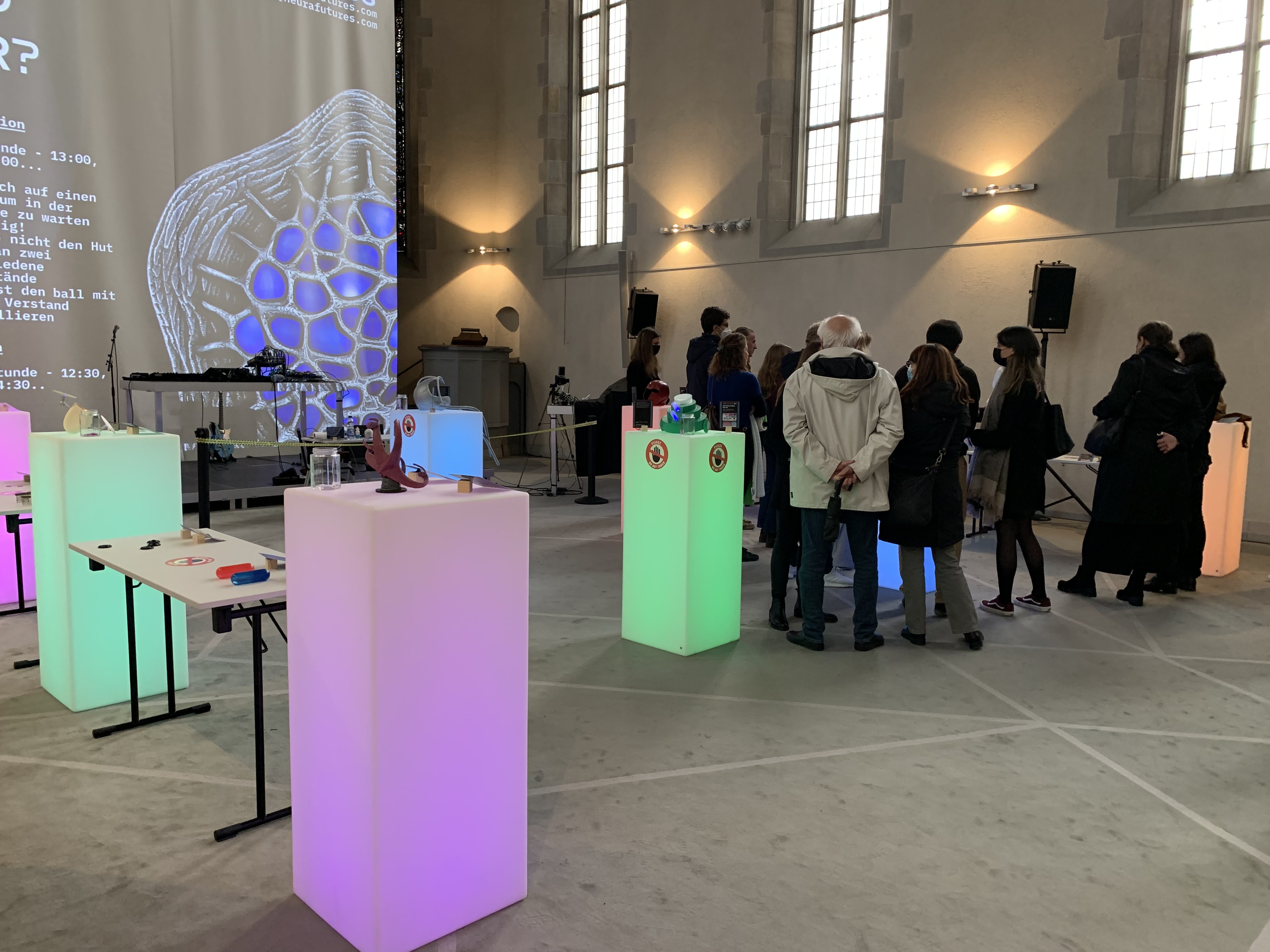DA-Z Art Festival, Zurich

View the MIT Media Lab 2022 Installation here.
Science fiction has illustrated the fusion of humanity and technology for decades, and movies, novels, and video games featuring BCIs — which we call BCI-fi — are important to the acceptance of BCIs because they are the primary sources of the public’s experience with this kind of technology. As a result, BCI-fi exposes the public to possible futures and has a lot of influence over our feelings about these futures. BCI-fi calls into question our senses of humanity, ability, identity, and existence.
We designed an immersive art installation based on these ideas and our data, which was open to the general public at the Da-Z Website festival, Oct 27-31, 2021 in Zurich, Switzerland. The theme for of 2021 edition was “Awakening”: for our installation, we asked the attendees to face these senses and awaken themselves to their own sociotechnological morals.
We fabricated 20 real-size physical prototypes, or props, of the neural devices featured in different BCI-fi, each of which represents different permutations of answers to these senses and morals — essentially, different futures. These props were organized around the space, and this space was open for exploration. The public was able to take a “FuturesTest” in which they made a series of choices about the future they hope or predict to see, the results of which was the prop in the space that is the most representative of their morals. The test required users to consider new aspects of their identity and understand the ethics of AI and human-enhancement by asking questions about utopian vs. dystopian worlds, invasive vs. non-invasive technologies, and when they believe different neuratechnological events will happen. You may also take this test below.
After the test, a unique card was offered to the participant with these results, and the participant was encouraged to also insert a token into the “bank” associated with their preferred prop. In this way, over time, we were able to see which props — which futures — are the most popular ones, and hence how the public as a whole tends to predict/understand the future and which kinds of media/devices have the most influence on the public.
Some of the props were also fitted with real EEG sensors, and users were able to try those on and play with. We were also running demos of the interaction, which included live testing by any person who were present at the installation: controlling a small robot using their brain activity.
This experience highlights the paradox that humans are willing to exchange their own data, their identity, for social and emotional comfort. We often use technology to blend in, have fun, and stay up to date, but in this case, we have to expose the most intimate level of our identities, our biodata, to do so. Data privacy is not only a common theme in sci-fi but is incredibly relevant in society today, as biodata is becoming more and more accessible to the corporate world; we want to use the installation to expose—awaken—users to the dangers of surveillance capitalism, in the hopes that it sparks more action toward enacting proper biotechnological legislation. We asked at the end of the experience that users reflect on the data that they gave up for their entertainment and mental growth, and consider whether preserving or growing identity is more valuable to the advancement of humanity.
Gallery
Share this page on social media:
© NeuraFutures.com all rights reserved 2021-2024
Copyright Disclaimer under section 107 of the Copyright Act of 1976, allowance is made for “fair use” for purposes such as criticism, comment, news reporting, teaching, scholarship, education and research. Fair use is a use permitted by copyright statute that might otherwise be infringing.